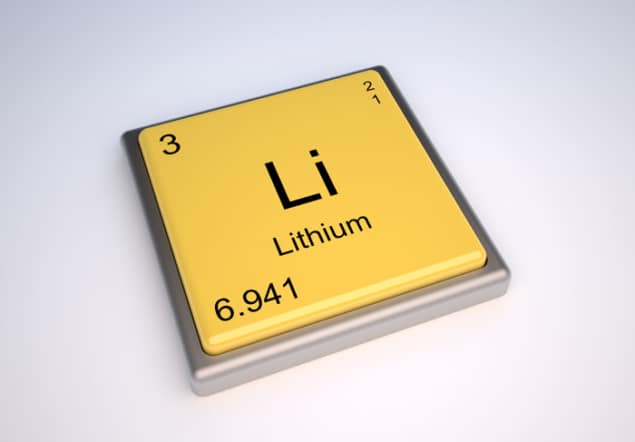
For a little more than a decade, scientists have been struggling to explain why the amount of lithium predicted to have been formed in the early universe is about three times the value actually observed. Now, an international team of researchers believes it may have the answer: a new type of particle, outside of the Standard Model, that would have interacted with protons and neutrons shortly after the Big Bang so as to break up lithium-7.
According to a theory known as “Big Bang nucleosynthesis”, protons and neutrons fused to form nuclei in the first few minutes after the Big Bang. This process generated deuterium, large amounts of helium-4 and smaller amounts of helium-3 – the latter two combined to create beryllium-7, which eventually decayed to lithium-7. The theory makes very precise predictions of the relative proportions of these nuclei, based on a quantity – known as the photon–baryon ratio – taken from observations of the cosmic microwave background.
Measurement mismatch?
For helium and deuterium, these predictions agree very well with observations of physical systems thought to contain material dating back to the time of the Big Bang. However, the theoretical value for lithium – just five per billion of hydrogen – is between two and five times too high.
Now, Maxim Pospelov of the Perimeter Institute in Waterloo, Canada, together with colleagues at the Austrian Academy of Sciences in Vienna, says that this mismatch is not a “full-blown crisis for cosmology” because the observed lithium-7 levels, which are obtained from atmospheric spectra of very old stars, might not match primordial values. The researchers say that obscure astrophysical processes might have depleted lithium within the stellar atmospheres, but add that astrophysicists have yet to pinpoint such a process.
Instead, the team has looked to particle physics for a solution. Pospelov points out that, for several years, physicists thought that neutrons produced by the decay of unstable “supersymmetric” particles might have converted lithium-7 into lighter nuclei such as helium-4. However, those neutrons would eventually have fused with spare protons to create more deuterium, making the theoretical abundance of that isotope too high. Any extra helium-4, in contrast, would have been almost unnoticeable, given its abundance. “The amount of deuterium has been measured very accurately in the last few years,” he says, “so supersymmetric scenarios have been completely disfavoured.”
X marks the spot?
To overcome this problem, Pospelov and colleagues propose a previously unknown “X” particle that is electrically neutral and fairly stable, which interacts fairly strongly with both protons and neutrons, and has a mass lying somewhere between 1.6–20 MeV. The merit of particle X, explains Pospelov, is that it does not require extra neutrons to break up lithium. “Our idea was to find a particle-physics ingredient to recycle the neutrons that already exist,” he says.
Particle X would deplete lithium in two ways. It could break up beryllium nuclei into helium-3 and helium-4 before they could decay to lithium-7. It could also break up deuterium nuclei into their constituent protons and neutrons. In this latter case, the freed neutrons would destroy the lithium, but would then recombine with single protons to leave the deuterium abundance essentially unchanged. The 20 MeV upper limit on particle X’s mass, being less than the binding energy of helium-4, would mean that the abundance of these nuclei is also unaffected.
As to whether particle X could have any other role in the universe, Pospelov says it might conceivably act as a mediator between normal matter and dark matter – the mysterious substance thought to make up at least four-fifths of the universe’s mass. He notes that hypothetical “self-interacting” dark matter is favoured to have a mediator with about the same mass, between 10–30 MeV.
Solve for X
Pospelov concedes that the new particle might sound “somewhat arbitrary”, but he says that a number of experiments can test for its existence. Among these are “beam-dump” experiments involving the illumination of a fixed target with a beam of protons or electrons and monitoring for particles of just the right mass a few metres beyond the target. Alternatively, he says, experiments studying particles known as kaons would provide “a very clean environment” for hunting X particles, because these would interact strongly with light quarks, such as the strange and up/down quarks that make up kaons.
In the absence of such experimental evidence, other experts are sceptical. Keith Olive of the University of Minnesota in the US says there is little theoretical motivation for a light particle that interacts strongly with protons and neutrons that lies outside of the Standard Model. The proposal, he argues, “serves as more of an example of what might work, rather than as a solution” to the problem of the missing cosmic lithium.
Kenneth Nollett of San Diego State University, also in the US, describes the proposal as “clever” but “somewhat speculative”. He suspects that the lithium problem probably has an astrophysical explanation, but says that even if that proves to be the case, the current research will have been worthwhile. “Forward progress in science requires work on all fronts,” he says.
The research is published in Physical Review Letters.



